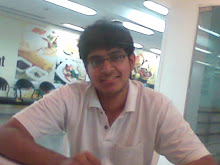
Rave, rave dance or rave party is a term first used in the 1980s to describe dance parties (often all-night events) with fast-paced electronic music and light shows.[1][2] At these parties people dance to dance music played by DJs and occasionally live performers. The genres of electronic dance music played include house, trance, techno and jungle (often collectively referred to as "rave music"),[2] with the accompaniment of laser light shows, projected images and artificial fog.
In North America and Australia, the term is still widely used to describe dance music events. However; with the rise of legal dance music nightclubs, it fell out of use in the UK and Europe, where it now refers to parties that took place in the late 1980s or early 1990s. Unlicenced events are instead referred to as free parties when held outdoors or squat parties when held in buildings.
The late 1950s in London saw the term "rave" used to describe the "wild bohemian parties" of the Soho beatnik underground.[3] In 1958 Buddy Holly recorded the hit "Rave On," citing the madness and frenzy of a feeling and the desire for it to never end.[4] The word "rave" was later used in the burgeoning mod youth culture of the early 1960s as the way to describe any wild party in general. People who were gregarious party animals were described as "ravers". Pop musicians such as Steve Marriott of The Small Faces and Clare Willans were self-described "ravers".
Hippies of a New Era

American ravers, following their early UK & European counterparts, have been compared to both the hippies of the 1960s and the new wavers of the 1980s, due to their interest in non-violence and music. In the 1990s, one of the most influential Rave organisers / promoters in America was San Diego's G.U.N. ,Global Underworld Network known as Nicholas Luckinbill and Branden Powers. They were made famous for organising and throwing the internationally known OPIUM and NARNIA raves that reached in size of 60,000 plus people in attendance, a feat unheard of at that time. Narnia which would become famous for a morning hand holding circle of unity was featured on Mtv and twice in LIFE magazine being honored with Event of the Year in 1995. Narnia quickly became known as the "Woodstock of Generation X". These festivals were mostly held on Indian Reservations and Ski Resorts during the Summer months and were headlined by well known DJs such as Doc Martin,Dimitri of Dee-lite,Afrika Islam and the Hardkiss brothers from San Francisco. They also featured exceptional local San Diego DJ's Jon Bishop, Steve Pagan,Alien Tom,Jeff Skot and Mark E. Quark. Global Underworld's events were the first prop heavy , themed parties in America. Global Underworld Network were also the first production company to throw Raves within Mexico, thus launching the entire rave culture movement within South America as well. The iconic fairy and pixie craze with ravers getting fairy tattoos and wearing wings to parties all started from an image of a winged fairy on the first Narnia flyer. The Crystal Method played their first out of town show for Global Underworld's Universary event. Fearing reprisals from the police Global Underworld Network advertised the event as "A thousand Points of Light" referring to the power of healing crystals and not the obvious drug reference of the Crystal Methods name. A fact that tickled the upcoming artist so much they would refer to it years later in their biography. The Chemical Brothers were also in awe of Nicholas and Branden's Global Underworld headquarters in downtown San Diego. A multi story building of the arts, much like Warhol's factory. There Global Underworld fed starving artists and provided space for all the arts. The Chemical Brothers played an intimate show at Global's offices in front of a few hundred lucky fans on the eve of a Global event that was shut down by the authorities. In an interview with Virgin Airways The Chemical Brothers referred to Global Underworld as a cult with cult like followers, a fact that wasn't too far from the truth. Nicholas Luckinbill step grandson of the late Lucille Ball and Branden Powers were the Tim Leary and Ken Keaseys of the Rave Generation, and were instrumental in creating their political movement called RTD or RIGHT TO DANCE. RTD was a non violent protest held in San Diego and later in Los Angeles on the steps of the Cities administrators proving that Rave was about community , peace, love and not a dirty word. These protest by Global Underworld helped lay the foundation for future growth within the rave scene.

No comments:
Post a Comment